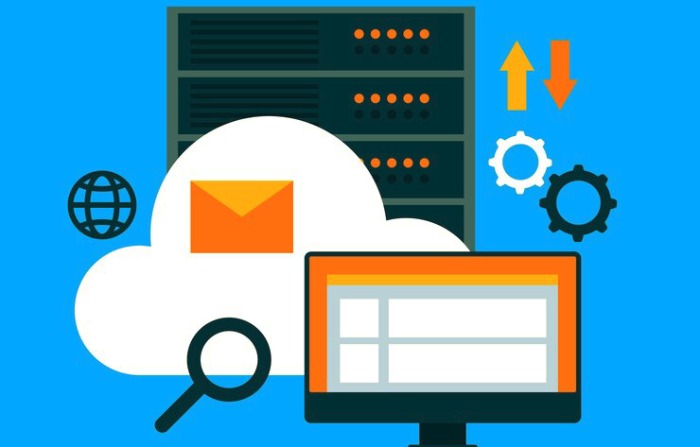- Cost Savings: Reduce expenses by minimizing hardware needs and maintenance.
- Flexibility: Adapt effortlessly as your organization expands.
- Remote Access: Retrieve emails and documents from any location and device.
- Security and Compliance: Take advantage of top-tier security measures and compliance resources.
- Versions of email clients being utilized
- Size of mailboxes and total user count
- Network speed and delay
- External integrations (such as archiving and anti-spam solutions)
- Cutover Migration: Ideal for small organizations with up to 150 mailboxes, allowing for simultaneous migration of all accounts.
- Staged Migration: Designed for larger setups, this method is applicable only for Exchange 2003/2007 and facilitates the batch migration of mailboxes.
- Hybrid Migration: Best suited for large enterprises utilizing on-premises Exchange servers, enabling a seamless coexistence between local and cloud environments.
- IMAP Migration: This option caters to non-Exchange platforms, such as Gmail or other servers that use IMAP.
- A communication plan for users
- Scheduled downtime and testing intervals
- A contingency plan for potential problems
- Multi-factor authentication (MFA)
- Data Loss Prevention (DLP)
- Mobile Device Management (MDM)
- Conditional Access Policies
Complete Office 365 Migration Guide For
Smooth Email Transition
Smooth Email Transition
Transitioning to Microsoft Office 365 represents a significant opportunity to enhance your organization’s approach to email, teamwork, and productivity resources. Nonetheless, executing this migration demands meticulous preparation and implementation to prevent service interruptions, data loss, and dissatisfaction among users. This all-encompassing guide provides you with essential information for achieving a seamless and effective transition of your email system to Office 365.
Why Move to Office 365?
Microsoft 365, previously known as Office 365, is a comprehensive cloud-based solution that includes powerful tools such as Exchange Online, SharePoint, OneDrive, Teams, and the well-known Office applications.
Planning Your Office 365 Email Migration
Assess Your Current Infrastructure
Perform a thorough evaluation of your current email system.
This assessment will assist in identifying the most suitable approach and schedule for migration.
Choose the Right Migration Type
Office 365 provides a variety of migration methods, each tailored for specific requirements:

Preparing for the Migration
Create a Migration Plan and Timeline
An organized project schedule helps prevent interruptions.
Backup All Existing Mailboxes
While Office 365 offers robust security, it's advisable to conduct a complete backup of all current mailboxes. This step safeguards your data against any potential issues that may arise during the migration process. Make sure to back up all existing mailboxes thoroughly prior to migration to avoid any risk of data loss due to errors.
Setup Office 365 Tenant
Establish your Microsoft 365 tenant by managing DNS configurations, confirming domain ownership, and allocating licenses. Additionally, implement security protocols and define user roles within the system.
Train End-Users
Familiarize users with the Office 365 environment. Provide training sessions on utilizing Outlook, Teams, OneDrive, and various other applications to minimize resistance and decrease support requests after the migration process.
Executing the Migration
Perform a Pilot Migration
Prior to implementing the changes across the entire organization, initiate a pilot program with a limited number of users. This will help uncover any unforeseen challenges and enable you to enhance your migration approach. Test the migration with a small cohort to pinpoint possible problems and improve the overall strategy.
Start Full-Scale Migration
Based on the approach you select, initiate the migration of mailboxes either in stages or as a single batch. Keep a close eye on the procedure:
Throughout the migration, it is crucial to utilize migration dashboards and logs to track progress, quickly resolve any issues that may occur, and keep affected users informed to ensure clarity and reduce any interruptions. Visit this link to learn more.

Post-Migration Best Practices
Verify Data Integrity
Confirm that the migration of emails, contacts, calendars, and attachments has been completed without any issues. It's essential to assess data integrity by looking for any absent folders, corrupted files, or incomplete synchronization to guarantee that everything has been accurately and fully transferred.
Update DNS Records
Modify the MX records to direct traffic to Office 365. Additionally, revise the SPF, DKIM, and DMARC records to improve email delivery and security. Adjust your domain's DNS configurations, encompassing MX, SPF, DKIM, and DMARC records, to ensure emails are sent via Office 365 while boosting both deliverability and protection.
Enable Features and Policies
Enable functionalities such as:
This guarantees continuous adherence to compliance and security standards.
Monitor and Optimize
Keep tracking user satisfaction and system performance. Collect input and address any concerns that arise. Gradually enhance workflows by leveraging Microsoft 365 tools. After migration, persist in observing system efficiency and user insights to pinpoint problems and improve the utilization of Microsoft 365.